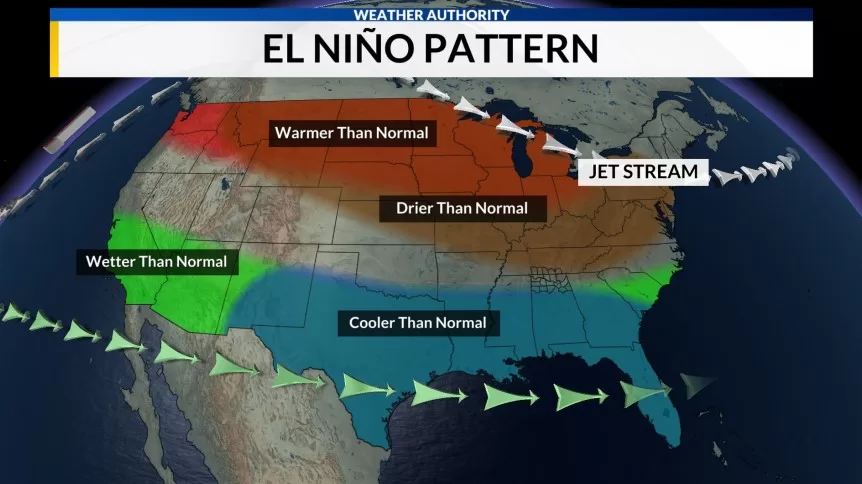The emergence of the El Niño climate pattern could potentially lead to a significant impact on renewable energy production in the United States. This El Niño impact on renewable energy production stems from the climate phenomenon’s tendency to cause weaker wind speeds and fluctuations in precipitation. Both of these factors could adversely affect renewable energy sources such as wind and hydroelectric power
Wind turbines, which contribute significantly to the country’s electricity generation, require modest wind speeds to operate effectively. However, with the predicted shift from the rare “triple-dip” La Niña to El Niño, wind speeds are expected to decrease. This could present challenges for some facilities, which need wind speeds of at least five miles per hour to generate electricity. Despite this, the wind industry remains resilient. Adaptations to weather impacts have shown that larger turbines generally outperform smaller ones when wind speeds drop.

El Niño Impact on Renewable Energy Production
In addition to wind energy, the shift in precipitation patterns resulting from El Niño could also affect hydroelectric energy production. Regions with increased rainfall could see a boost in power generation as water flows into rivers and reservoirs increase. However, regions experiencing reduced rainfall may face lower water levels, leading to a decrease in power generation.
The transition to El Niño doesn’t mean renewable energy production will completely stop, but it might significantly affect consumption. Weather-related fluctuations, such as a warm day or a cold winter night, can lead to variations in energy demand that are beyond the control of homes and businesses. In fact, colder-than-average weather can cause a surge in demand, placing stress on electrical grids.
Despite the situation, energy experts maintain their composure. Over 70,000 wind turbines were operating in the U.S. as of January 2022. Weather conditions might cause some turbines to become inactive, but fossil fuel power plants stand ready to fill in. Operators can turn these plants on and off as necessary, providing a backup for renewable energy sources.1
In a related development, an innovative project is set to be piloted in Illinois. A collaboration between CapCO2 Solutions and Adkins Energy LLC, the project aims to test a technology that captures CO2 from an ethanol plant and combines it with hydrogen to produce green methanol. This renewable fuel might offer a solution to the contentious CO2 pipelines issue. Operators can carry out the process right at the ethanol plant, eliminating the need to transport CO2 elsewhere.
While these developments paint a dynamic picture of the renewable energy landscape in the U.S., the situation is still evolving. Energy experts are closely watching the El Niño climate pattern’s impacts on renewable energy production and expect to provide further updates in the coming months.